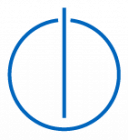Acquiring Modells of Rectangular Objects for Robot Maps (bibtex)
by D Schröter and M Beetz
Abstract:
State-of-the-art robot mapping approaches are capable of acquiring impressively accurate 2D and 3D models of their environments. To the best of our knowledge few of them can acquire models of task-relevant objects. In this paper, we introduce a novel method for acquiring models of task-relevant objects from stereo images. The proposed algorithm applies methods from projective geometry and works for rectangular objects, which are, in office- and museum-like environments, the most commonly found subclass of geometric objects. The method is shown to work accurately and for a wide range of viewing angles and distances.
Reference:
Acquiring Modells of Rectangular Objects for Robot Maps (D Schröter and M Beetz), In Proc. of IEEE International Conference on Robotics and Automation (ICRA), New Orleans/USA, 2004.
Bibtex Entry:
@inproceedings{schroter_acquiring_2004,
author = {D Schröter and M Beetz},
title = {Acquiring Modells of Rectangular Objects for Robot Maps},
booktitle = {Proc. of {IEEE} International Conference on Robotics and Automation
({ICRA)}, New {Orleans/USA}},
year = {2004},
abstract = {State-of-the-art robot mapping approaches are capable of acquiring
impressively accurate {2D} and {3D} models of their environments.
To the best of our knowledge few of them can acquire models of task-relevant
objects. In this paper, we introduce a novel method for acquiring
models of task-relevant objects from stereo images. The proposed
algorithm applies methods from projective geometry and works for
rectangular objects, which are, in office- and museum-like environments,
the most commonly found subclass of geometric objects. The method
is shown to work accurately and for a wide range of viewing angles
and distances.},
}
Powered by bibtexbrowser
Go Back



